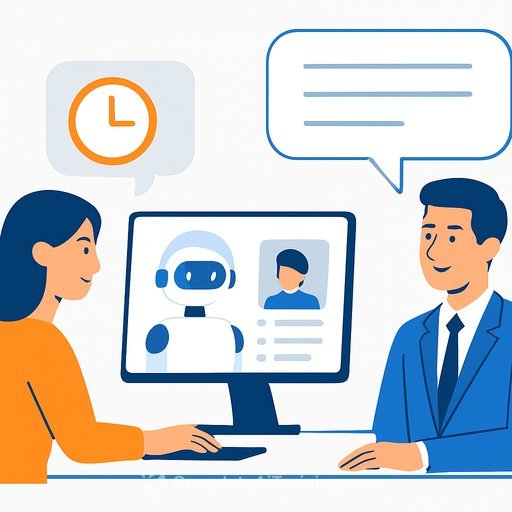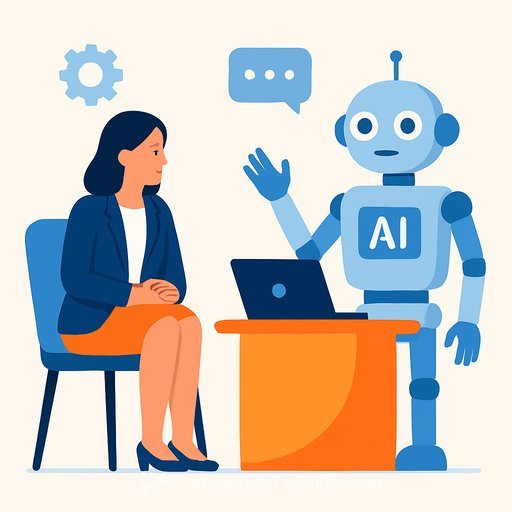HR at the front line: Bangladesh must build skills to keep pace with AI and 4IR
At a Dhaka Chamber of Commerce and Industry (DCCI) roundtable on "Smart Human Capital Development in the Context of the Fourth Industrial Revolution (4IR)," speakers delivered a clear message: Bangladesh needs a coordinated push to build practical, job-ready skills across its workforce. For HR leaders, this is a call to move from awareness to execution-faster training cycles, deeper industry-academia ties, and measurable outcomes.
Executive Chairman of the National Skills Development Authority (NSDA) Dr. Nazneen Kawshar Chowdhury underscored gaps in coordination among public agencies and low awareness around skills development. She noted NSDA is shifting focus from institution-building to training delivery, with initiatives like Japanese language programmes to send 100,000 skilled workers to Japan and targeted upskilling for women.
DCCI President Taskeen Ahmed highlighted that AI is changing production systems, business operations, and labor markets. Referencing the World Economic Forum, he cited that roughly a quarter of roles will change over the next five years-putting pressure on employers to re-skill at scale. In the post-LDC era, he said, smart human resources will be essential to stay competitive.
In his keynote, Dr. M. Niaz Asadullah, visiting Professor of Economics at the University of Reading (UK), pressed for rigorous training to boost technological capability, modernization of education, wider use of advanced tools in technical training, and reliable budget allocations for skills programmes.
Why this matters for HR
HR sits closest to the talent pipeline-and the skills gap. The shift driven by AI and automation will reconfigure tasks, roles, and training needs inside every function, from manufacturing and logistics to finance and customer service. Waiting on policy alone is risky; employers that build internal academies, certifications, and apprenticeship tracks will win on productivity and retention.
For context, the World Economic Forum estimates a major reshuffle of jobs and skills in the near term. See the Future of Jobs analysis for data on roles growing and declining, plus the skills most in demand. Read the WEF report.
Key points from the roundtable
- Coordination: Close the gaps among government agencies delivering training; streamline standards and outcomes (NSDA).
- Education reform: Modernize curricula; integrate AI, data, and automation concepts into technical and general education.
- TVET expansion: Scale technical and vocational programmes aligned to industry demand; make them aspirational.
- Budget certainty: Ensure stable funding for skills development and employer-led training.
- Women's upskilling: Prioritize targeted programmes to increase female participation in tech-enabled roles.
- International placement: Build pipelines (e.g., Japanese language training) to place skilled workers abroad and strengthen remittances.
- Industry-academia linkage: Co-develop curricula, apprenticeships, and labs that reflect actual job tasks.
- Employer responsibility: HR to champion rigorous, tech-focused training and on-the-job learning tied to business metrics.
What HR teams can do this quarter
- Run a skills audit: Map current roles to future tasks. Identify priority gaps in AI literacy, data use, automation, and digital tools.
- Launch role-based training paths: Short, stackable modules with assessments and micro-credentials. Tie completion to pay and promotion.
- Set up apprenticeships: Partner with polytechnics and universities for 6-12 month earn-and-learn tracks in data, QA automation, and advanced manufacturing.
- Reallocate L&D budget: Move at least 30-40% to tech-enablement and AI-adjacent skills. Track ROI via productivity and cycle-time reductions.
- Upskill managers first: Train line managers on AI use cases, prompt quality, KPI design, and change adoption so teams follow their lead.
- Women-focused pathways: Offer flexible schedules, childcare support where feasible, and scholarships for women in technical roles.
- Build an overseas placement pipeline: For sectors aligned with Japan's demand, coordinate language and skills certification with NSDA standards.
- Standardize AI policies: Create guidelines for data privacy, tool usage, and QA. Add scenario-based training to reduce risk.
- Measure what matters: Track completion rates, skill assessment scores, productivity deltas, error rates, and internal mobility.
What the speakers emphasized
Dr. Nazneen Kawshar Chowdhury (NSDA) called for better inter-agency coordination and scaled training delivery, highlighting Japanese language programmes and women's upskilling as immediate levers. She also urged tighter public-private collaboration to align training with 4IR needs.
Taskeen Ahmed (DCCI) pressed for fundamental education reform, more technical education, and stronger industry-academia linkage to keep the workforce competitive. He emphasized preparing people for tech-driven employment opportunities, not just replacing roles.
Dr. M. Niaz Asadullah urged rigorous, technology-focused training and reliable funding. Other contributors-including Mahtab Uddin Ahmed (ICMAB), Prof. Dr. Shams Rahman (EWU), Mohammed Saiful Hassan (ICT Division, Bangladesh Hi-Tech Park Authority), Raisul Kabir (Brain Station 23), Dr. Muhammad Masroor Ali (BUET), Khan Muhammad Saqiful Alam (British American Tobacco), and M. Shabbir Ali (Transcom Group)-stressed elevating technical education, changing mindsets about vocational tracks, and making curricula reflect real work.
In open discussion, DCCI former Vice-President M. Abu Hurairah emphasized sending skilled manpower abroad to strengthen remittances and expanding technical education programmes. DCCI Senior Vice President Razeev H Chowdhury, Vice President Md. Salem Sulaiman, Director Zamsher Ali, and Convenor Mir Sharukh Islam were also present.
Practical HR playbook for 4IR
- Skill taxonomies: Adopt a company-wide skill framework for AI, data, automation, cybersecurity, and digital operations.
- Learning systems: Use a lightweight LMS or even structured playlists to deliver modular learning, with quarterly refresh cycles.
- Performance tie-in: Connect skill gains to real outcomes-faster throughput, fewer defects, shorter response times.
- Supplier enablement: Extend training to contractors and vendors to stabilize quality across the chain.
- Governance: Form a skills council across HR, operations, IT, and finance to keep training relevant and funded.
If you're building a skills roadmap by role, this curated directory can help you shortlist courses that match job families-HR, finance, operations, engineering, and more. Explore AI courses by job.
Bottom line: HR is the operating system for skills. Start with a clear skills map, fund focused training, and hold the line on outcomes. The companies that move first will set the standard for productivity-and for talent retention-in the 4IR era.
Your membership also unlocks:






